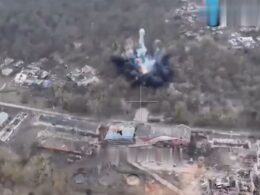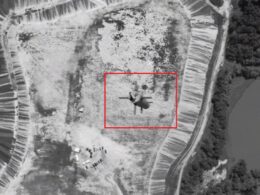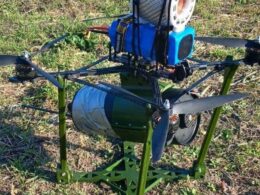While Ukraine actively employs drones against Russian forces, effectively destroying military equipment and strongholds, it nevertheless faces significant vulnerabilities to Russian electronic warfare (EW) systems, the Economist states. Moreover, although Western nations have concentrated their military aid on tangible hardware such as tanks and missiles, they have allocated relatively little towards aiding Ukraine in countering Russia's formidable EW capabilities.
The Russian army has “adopted about 60 types of modern EW equipment, which have better characteristics, high mobility, increased security, short set-up and tear-down time, the introduction of new technical solutions, automation tools, special software,
” General Valerii Zaluzhnyi, Commander-in-Chief of the Ukrainian Armed Forces says in his essay.
By contrast, Ukraine entered the war with mainly outdated Soviet-era EW technology, Zaluzhnyi notes.
This gap mattered little early on, but as the war has stabilized along fixed frontlines, Russia has been able to position advanced EW systems where they can wreak the most havoc. The Economist reports several instances of Russian jamming throwing off the accuracy of key Ukrainian weaponry, including GPS-guided shells, laser-guided bombs provided by the US, and long-range HIMARS rockets.
Russia has proven especially disruptive when it comes to Ukraine’s extensive use of cheap unmanned aerial vehicles (UAVs) for reconnaissance and assault roles. Ukraine has trained 10,000 drone pilots who constantly grapple with Russian EW operators. At times, over 2,000 Ukrainian drones have been disabled in a single week by Russian signal scrambling or control link jamming. With drone losses mounting and Russia deploying larger drone fleets of its own near battlefronts like Bakhmut, Ukraine is at a growing disadvantage, The Economist says.
The Economist attributes Russia’s EW edge in part to the multitude of systems it can concentrate along the front. Analysts estimate one major Russian EW vehicle every 10 km on average. Among the most concerning is the truck-mounted Shipovnik-Aero system, which has a 10 km range and can not only take control of enemy drones but geo-locate their operators for artillery targeting.
Ukraine is working to close the EW gap, deploying homegrown systems like Pokrova to disrupt Russian navigation and targeting. According to Zaluzhnyi Zaluzhnyi, Pokrova is a nationwide EW system “with the possibility of replacing the satellite radio navigation field (“spoofing”). Despite the limited information available, it is known that Pokrova aims to suppress satellite radio navigation across the entire frontline and over most of Ukraine’s territory. This means that all systems using satellite navigation will not work or display incorrect data almost throughout Ukraine when the system is activated.
Ukraine deploys new electronic warfare systems to counter Russian airstrike tactics
However, The Economist relays Nico Lange's concerns regarding Ukraine's EW challenge. As an expert on Ukraine with the Munich Security Conference, Lange views NATO's EW capabilities with skepticism, fearing they might not match Russia's. He further believes that the West, particularly the United States, is hesitant to fully reveal its EW capabilities to Russia, concerned that sensitive information could end up with China. This includes details like frequency use and channel-hopping methods.
Lange suggests the West could be more proactive by using its long-range surveillance drones to gather intelligence on Russian jamming and spoofing activities. By doing this, the West could assist Ukraine in developing effective countermeasures. Without such assistance, Ukraine could be left to face its electronic warfare challenges predominantly by itself, The Economist concluded.
Read also:
- Russia deploys carbon-coated Shahed drones in nighttime attack on Ukraine
- NATO official calls for “Military Schengen” to boost European defense mobility
- DeepState: Russians have built over 6,000 km of fortifications in occupied territories
- Minister Kamyshyn sees Ukraine as a global arms powerhouse post-war





